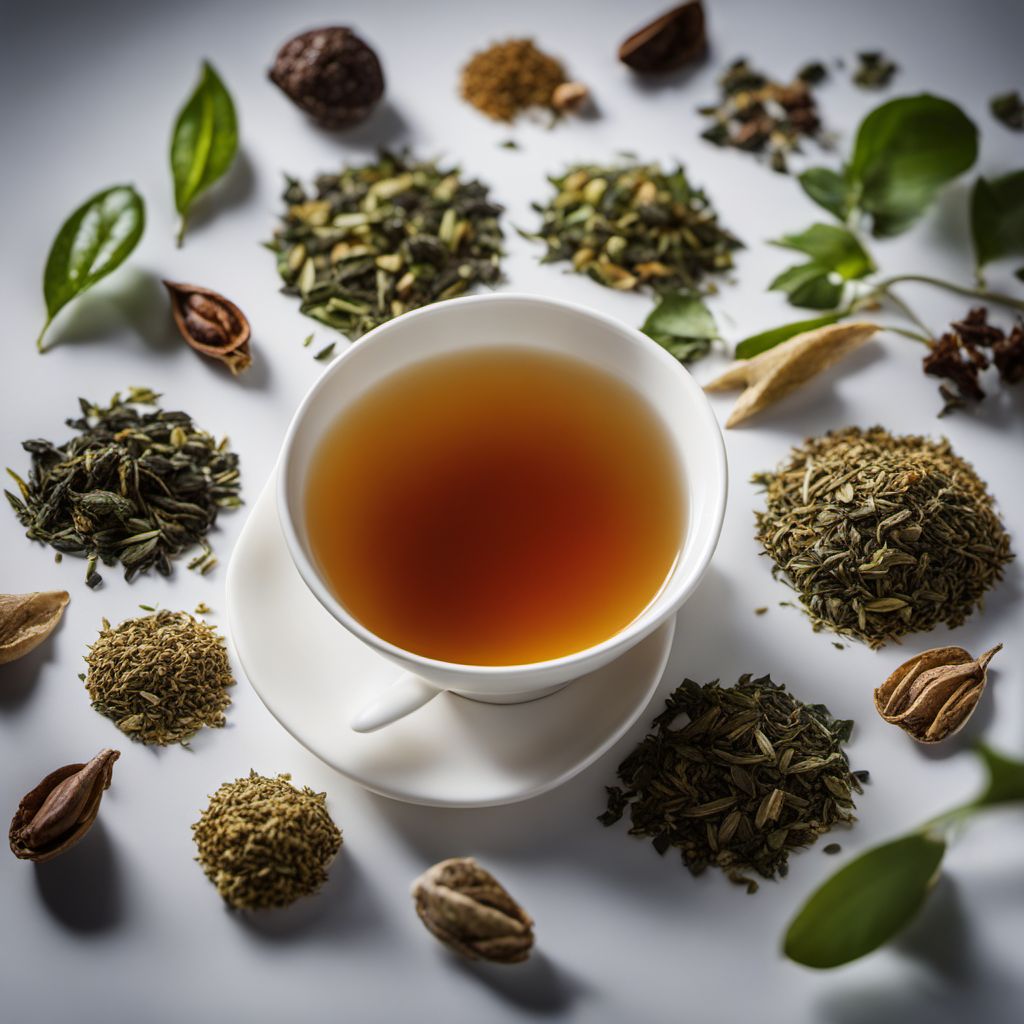
Ingredient
Tea leaves derivatives and tea ingredients
Unveiling the Secrets of Tea: Exploring the World of Tea Leaves Derivatives and Ingredients
Tea leaves derivatives and tea ingredients encompass a diverse array of products derived from the Camellia sinensis plant. These ingredients can be classified into different categories, including black tea, green tea, white tea, oolong tea, herbal teas, and tea blends. Each type of tea has its own unique characteristics, taste profiles, and brewing methods. Tea leaves derivatives and ingredients can vary in appearance, ranging from tightly rolled leaves to fine powders or dried herbs. They offer a wide range of flavors, from delicate and floral to robust and earthy, and their textures can range from smooth and silky to coarse and fibrous.
Origins and history
Tea has a rich history that dates back thousands of years, originating in ancient China. Legend has it that Emperor Shen Nong discovered tea when tea leaves accidentally fell into his boiling water. From China, tea cultivation and consumption spread to other parts of Asia, including Japan, India, and Sri Lanka. Over time, tea became an integral part of various cultural traditions and ceremonies, such as the Japanese tea ceremony and the British afternoon tea. Today, tea is enjoyed worldwide and has become a symbol of hospitality, relaxation, and socialization.
Nutritional information
Tea leaves derivatives and tea ingredients are rich in antioxidants, such as catechins and flavonoids, which have been linked to various health benefits, including improved heart health, reduced risk of chronic diseases, and enhanced immune function. They are also low in calories and can be a great alternative to sugary beverages. Additionally, tea contains caffeine, which can provide a natural energy boost.
Allergens
Tea leaves derivatives and tea ingredients are generally considered safe and do not commonly cause allergies. However, individuals with sensitivities to caffeine or specific herbs used in herbal teas should exercise caution and consult with a healthcare professional if necessary.
How to select
When selecting tea leaves derivatives and tea ingredients, it is important to consider the quality and freshness of the product. Look for tea leaves that are whole and intact, without any signs of damage or discoloration. For loose-leaf teas, opt for those that are tightly rolled and have a vibrant color. Avoid tea bags that contain broken leaves or dust, as they may result in a weaker flavor. Additionally, consider purchasing from reputable brands or specialty tea shops to ensure the highest quality.
Storage recommendations
To maintain the freshness and quality of tea leaves derivatives and tea ingredients, it is essential to store them properly. Keep them in airtight containers, away from light, heat, and moisture. Avoid storing them near strong-smelling substances, as tea leaves can absorb odors. It is recommended to consume tea within a year of purchase for optimal flavor.
How to produce
Amateur tea enthusiasts can grow their own tea plants by obtaining Camellia sinensis seeds or young plants from nurseries. Tea plants thrive in well-drained soil and prefer partial shade. With proper care, including regular watering and pruning, tea plants can be cultivated in suitable climates, such as regions with mild temperatures and moderate humidity.
Preparation tips
To prepare tea leaves derivatives and tea ingredients, start by heating water to the appropriate temperature, as different types of tea require different water temperatures. Steep the tea leaves or ingredients in hot water for the recommended time, usually between 2 to 5 minutes. Adjust the steeping time based on personal preference for stronger or milder flavors. Experiment with different brewing methods, such as using a teapot, tea infuser, or gaiwan, to enhance the tea-drinking experience. Add sweeteners, milk, or other flavorings according to taste.
Culinary uses
Tea leaves derivatives and tea ingredients are commonly used to brew traditional hot or iced teas, which can be enjoyed plain or with added sweeteners, milk, or citrus. They can also be used as flavorings in various culinary creations, such as desserts, marinades, sauces, and cocktails. Matcha, a powdered green tea, is often used in baking, smoothies, and desserts for its vibrant color and distinct flavor. Additionally, herbal teas can be used as a base for refreshing summer beverages or as a soothing infusion for herbal remedies.
Availability
Tea leaves derivatives and tea ingredients are widely available in countries with a tea-drinking culture, such as China, Japan, India, Sri Lanka, and the United Kingdom. They can also be found in specialty tea shops, online retailers, and some supermarkets worldwide.


